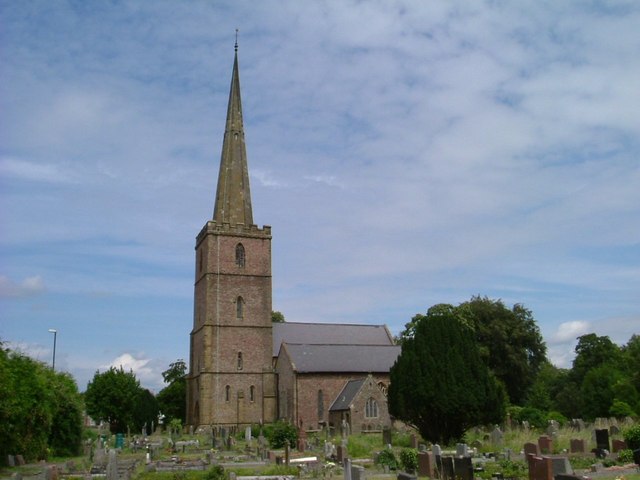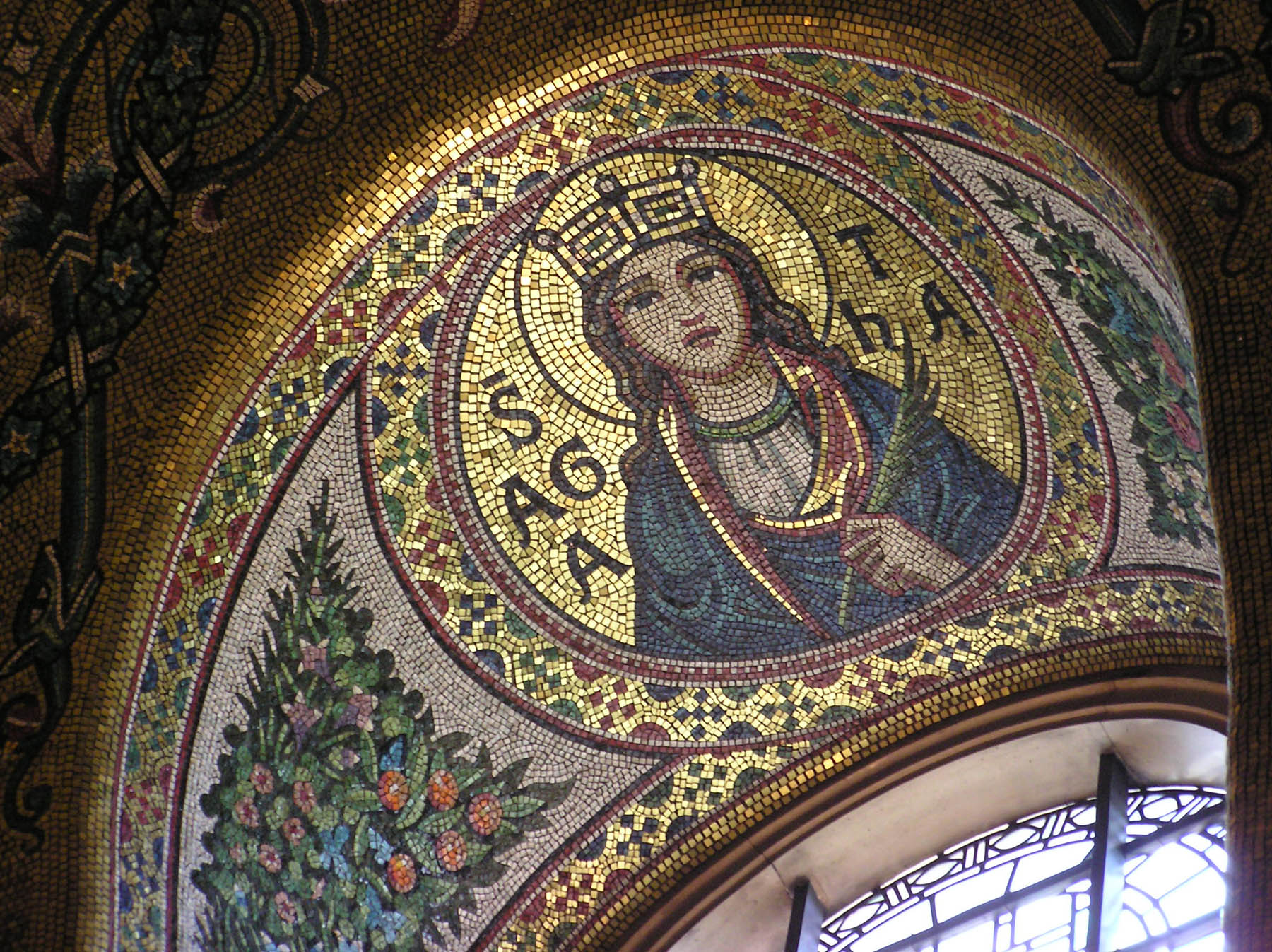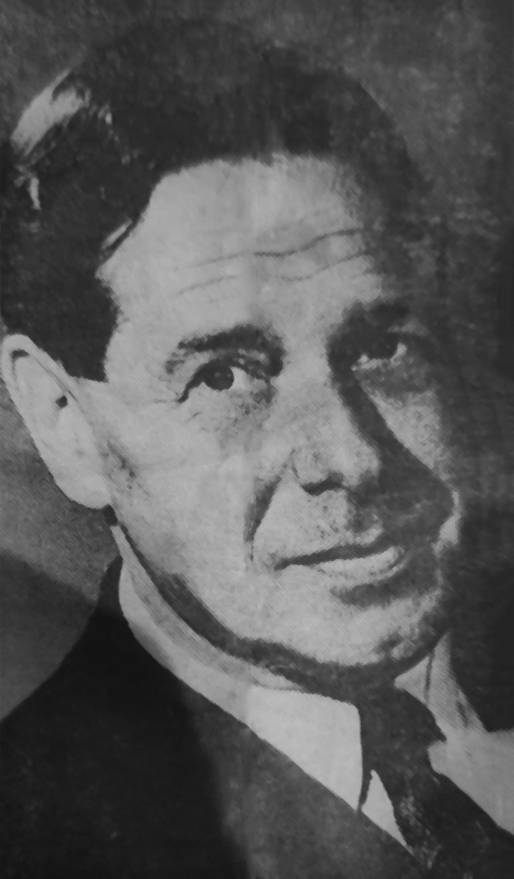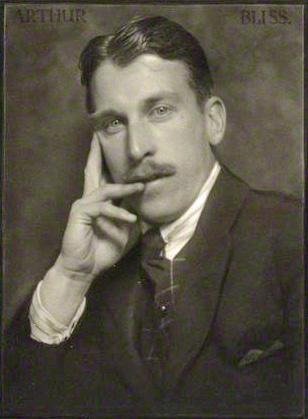|
Herbert Howells
Herbert Norman Howells (17 October 1892 – 23 February 1983) was an English composer, organist, and teacher, most famous for his large output of Anglican church music. Life Background and early education Howells was born in Lydney, Gloucestershire, the youngest of six children of Oliver Howells, a plumber, painter, decorator and builder, and his wife Elizabeth. His father played the organ at the local Baptist church, and Herbert showed early musical promise, first deputising for his father, and then moving at the age of eleven to the local Church of England parish church as choirboy and unofficial deputy organist. The Howells family's precarious financial situation came to a head when Oliver filed for bankruptcy in September 1904, when Herbert was nearly 12. This was a deep humiliation in a small community at the time and one from which Howells never fully recovered. Financially assisted by a member of the family of Charles Bathurst, 1st Viscount Bledisloe, who had taken an ... [...More Info...] [...Related Items...] OR: [Wikipedia] [Google] [Baidu] |
Lydney
Lydney is a town and civil parishes in England, civil parish in Gloucestershire, England. It is on the west bank of the River Severn in the Forest of Dean District, and is 16 miles (25 km) southwest of Gloucester. The town has been Bypass (road), bypassed by the A48 road since 1995. The population was 8,960 at the 2001 census, decreasing to 8,766 at the 2011 census, and increasing to 10,043 at the 2021 census. Lydney has a harbour on the Severn, created when the Lydney Canal was built. Adjoining the town, Lydney Park gardens have a Roman Britain, Roman temple dedicated to Nodens. Etymology According to Cook (1906) the toponym "Lydney" derives from the Old English *''Lydan-eġ'', "Lludd's Island", which could connect it with the name Nudd/Nodens. However, more probable etymologies of Lydney are offered in other sources. A. D. Mills suggests "island or river-meadow of the sailor, or of a man named *Lida", citing the forms "Lideneg" from c. 853 and "Ledenei" from the 1086 Dom ... [...More Info...] [...Related Items...] OR: [Wikipedia] [Google] [Baidu] |
Thomas Tallis
Thomas Tallis (; also Tallys or Talles; 23 November 1585) was an English composer of High Renaissance music. His compositions are primarily vocal, and he occupies a primary place in anthologies of English choral music. Tallis is considered one of England's greatest composers, and is honoured for his original voice in English musicianship. Life Youth As no records about the birth, family or childhood of Thomas Tallis exist, almost nothing is known about his early life or origins. Historians have calculated that he was born in the early part of the 16th century, towards the end of the reign of Henry VII of England, and estimates for the year of his birth range from 1500 to 1520. His only known relative was a cousin called John Sayer. As the surnames ''Sayer'' and ''Tallis'' both have strong connections with Kent, Thomas Tallis is usually thought to have been born somewhere in the county. [Baidu] |
Radium
Radium is a chemical element; it has chemical symbol, symbol Ra and atomic number 88. It is the sixth element in alkaline earth metal, group 2 of the periodic table, also known as the alkaline earth metals. Pure radium is silvery-white, but it readily reacts with nitrogen (rather than oxygen) upon exposure to air, forming a black surface layer of radium nitride (Ra3N2). All isotopes of radium are radioactive, the most stable isotope being radium-226 with a half-life of 1,600 years. When radium decays, it emits ionizing radiation as a by-product, which can excite fluorescent chemicals and cause radioluminescence. For this property, it was widely used in Self-luminous paint, self-luminous paints following its discovery. Of the Radionuclide, radioactive elements that occur in quantity, radium is considered particularly Toxicity, toxic, and it is Carcinogen, carcinogenic due to the radioactivity of both it and its immediate decay product radon as well as its tendency to B ... [...More Info...] [...Related Items...] OR: [Wikipedia] [Google] [Baidu] |
St Thomas' Hospital
St Thomas' Hospital is a large NHS teaching hospital in Central London, England. Administratively part of the Guy's and St Thomas' NHS Foundation Trust, together with Guy's Hospital, Evelina London Children's Hospital, Royal Brompton Hospital and other sites. It is also a member of King's Health Partners, an academic health science centre, and is one of three sites used by King's College London GKT School of Medical Education. The hospital was established in the Middle Ages and named for St Thomas Becket. Originally located in Southwark, but based in Lambeth since 1871, the hospital has provided healthcare freely or under charitable auspices since the 12th century. It is one of London's most famous hospitals, associated with people such as Sir Astley Cooper, William Cheselden, Florence Nightingale, Alicia Lloyd Still, Linda Richards, Edmund Montgomery, Agnes Elizabeth Jones and Sir Harold Ridley. It is a prominent London landmark – largely due to its location on ... [...More Info...] [...Related Items...] OR: [Wikipedia] [Google] [Baidu] |
World War I
World War I or the First World War (28 July 1914 – 11 November 1918), also known as the Great War, was a World war, global conflict between two coalitions: the Allies of World War I, Allies (or Entente) and the Central Powers. Fighting took place mainly in European theatre of World War I, Europe and the Middle Eastern theatre of World War I, Middle East, as well as in parts of African theatre of World War I, Africa and the Asian and Pacific theatre of World War I, Asia-Pacific, and in Europe was characterised by trench warfare; the widespread use of Artillery of World War I, artillery, machine guns, and Chemical weapons in World War I, chemical weapons (gas); and the introductions of Tanks in World War I, tanks and Aviation in World War I, aircraft. World War I was one of the List of wars by death toll, deadliest conflicts in history, resulting in an estimated World War I casualties, 10 million military dead and more than 20 million wounded, plus some 10 million civilian de ... [...More Info...] [...Related Items...] OR: [Wikipedia] [Google] [Baidu] |
Graves' Disease
Graves' disease, also known as toxic diffuse goiter or Basedow's disease, is an autoimmune disease that affects the thyroid. It frequently results in and is the most common cause of hyperthyroidism. It also often results in an enlarged thyroid. Signs and symptoms of hyperthyroidism may include irritability, muscle weakness, sleeping problems, a fast heartbeat, poor tolerance of heat, diarrhea and unintentional weight loss. Other symptoms may include thickening of the skin on the shins, known as pretibial myxedema, and eye bulging, a condition caused by Graves' ophthalmopathy. About 25 to 30% of people with the condition develop eye problems. The exact cause of the disease is unclear, but symptoms are a result of antibodies binding to receptors on the thyroid causing over-expression of thyroid hormone. Persons are more likely to be affected if they have a family member with the disease. If one monozygotic twin is affected, a 30% chance exists that the other twin will ... [...More Info...] [...Related Items...] OR: [Wikipedia] [Google] [Baidu] |
Francis Purcell Warren
Francis Purcell Warren (29 May 1895 – 3 July 1916) was a British violinist, violist and composer who was killed in World War One.Phillip BrookesPreface to ''Variations on an Original Theme for String Quartet'' published by Musikproduktion Hoeflich (2018) Warren was born in Leamington Spa. His father, Walter James Warren, was a musician. He studied at the Royal College of Music from February 1910 and was awarded the Morley Scholarship in May of that year.Thomas Dunhill. 'Francis Purcell Warren, 1895-1916', in ''Music & Letters'', Vol. 7, No. 4 (October 1926), pp. 357-363 While at the college he became a close friend of Herbert Howells. Howells portrayed "Bunny" Warren in the fourth movement ('Mazurka alias Minuet') of his light orchestral suite ''The B's'' (1914), alongside his friends Arthur Benjamin, Arthur Bliss and Ivor Gurney (aka "Bartholomew"). In the summer of 1914, before conscription was compulsory, Warren volunteered for war duty, joining the Royal Warwickshire Regime ... [...More Info...] [...Related Items...] OR: [Wikipedia] [Google] [Baidu] |
Richard Runciman Terry
Sir Richard Runciman Terry (3 January 1864 – 18 April 1938) was an English organist, choir director, composer and musicologist. He is noted for his pioneering revival of Tudor liturgical music. Early years Richard Terry was born in 1864 in Ellington, Northumberland. At the age of 11 he started playing the organ at the local church. He was educated at various schools in South Shields, St Albans and London. In 1881 Terry was living in Jarrow and working as a Pupil Teacher. Terry then spent seventeen months as a non-collegiate person at Oxford (October 1887 to May 1889) and two years at Cambridge (1888–90), where he went as a non-collegiate student but became a choral scholar at King's College, Cambridge. There he also became a music critic for ''The Cambridge Review''. At Cambridge, he was much influenced by the Professor of Music, Charles Villiers Stanford and the King's Chapel organist Arthur Henry Mann who taught him the techniques of choral singing and the training of b ... [...More Info...] [...Related Items...] OR: [Wikipedia] [Google] [Baidu] |
Westminster Cathedral
Westminster Cathedral, officially the Metropolitan Cathedral of the Most Precious Blood, is the largest Catholic Church in England and Wales, Roman Catholic church in England and Wales. The shrine is dedicated to the Blood of Jesus Christ and is the seat of the Archbishop of Westminster. The original site on which the cathedral stands in the City of Westminster was purchased by the Roman Catholic Diocese of Westminster, Diocese of Westminster in 1885, and construction was completed in 1903. Designed by John Francis Bentley in a 9th-century Christian Neo-Byzantine architecture, neo-Byzantine style, and accordingly made almost entirely of brick, without steel reinforcements, Sir John Betjeman called it "a masterpiece in striped brick and stone" that shows "the good craftsman has no need of steel or concrete." The cathedral merited an Apostolic Visit from Pope John Paul II on 28 May 1982 and Pope Benedict XVI in 18 September 2010. History In the late 19th century, th ... [...More Info...] [...Related Items...] OR: [Wikipedia] [Google] [Baidu] |
Arthur Benjamin
Arthur Leslie Benjamin (18 September 1893 in Sydney – 10 April 1960 in London) was an Australian composer, pianist, conductor and teacher. He is best known as the composer of ''Jamaican Rumba'' (1938) and of the '' Storm Clouds Cantata'', featured in both versions of the Alfred Hitchcock film ''The Man who Knew Too Much'', in 1934 and 1956. Early life and war Arthur Benjamin was born in Sydney on 18 September 1893 into a Jewish family, although he was a non-practicing Jew. His parents moved to Brisbane when Arthur was three years old. At the age of six, he made his first public appearance as a pianist and his formal musical training began three years later with George Sampson, the Organist of St John's Cathedral and Brisbane City Organist. In 1911, Benjamin won a scholarship from Brisbane Grammar School to the Royal College of Music (RCM), where he studied composition with Charles Villiers Stanford, harmony and counterpoint with Thomas Dunhill, and piano with Frederic Clif ... [...More Info...] [...Related Items...] OR: [Wikipedia] [Google] [Baidu] |
Arthur Bliss
Sir Arthur Edward Drummond Bliss (2 August 189127 March 1975) was an English composer and conductor. Bliss's musical training was cut short by the First World War, in which he served with distinction in the army. In the post-war years he quickly became known as an unconventional and Modernism (music), modernist composer, but within the decade he began to display a more traditional and romantic side in his music. In the 1920s and 1930s he composed extensively not only for the concert hall, but also for films and ballet. In the Second World War, Bliss returned to England from the US to work for the BBC and became its director of music. After the war he resumed his work as a composer, and was appointed Master of the Queen's Music. In Bliss's later years, his work was respected but was thought old-fashioned, and it was eclipsed by the music of younger colleagues such as William Walton and Benjamin Britten. Since his death, his compositions have been well represented in recording ... [...More Info...] [...Related Items...] OR: [Wikipedia] [Google] [Baidu] |
Charles Wood (composer)
Charles Wood (15 June 1866 – 12 July 1926) was an Irish composer and teacher; his students included Ralph Vaughan Williams at Cambridge and Herbert Howells at the Royal College of Music. He is primarily remembered and performed as an Anglican church music composer, but he also wrote songs and chamber music, particularly for string quartet. Early life and education Born in Vicars' Hill in the Cathedral precincts of Armagh, Ireland, Charles was the fifth child and third son of Charles Wood Sr. and Jemima Wood. The boy was a treble chorister in the choir of the nearby St. Patrick's Cathedral (Church of Ireland). His father sang tenor as a stipendiary 'Gentleman' or 'Lay Vicar Choral' in the Cathedral choir and was also the Diocesan Registrar of the church. He was a cousin of Irish composer Ina Boyle. The organist and composer William G Wood (1859-1895), also associated with Cambridge, was his elder brother. Wood received his early education at the Cathedral Choir School and als ... [...More Info...] [...Related Items...] OR: [Wikipedia] [Google] [Baidu] |








